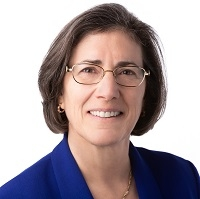A new concept of healthcare finance for recruiting, retaining and engaging the next generation of professionals

Jane C. Kaye
- To attract and retain millennials and Gen Z workers, the healthcare finance industry needs to do a better job of incorporating smart technology into workflows.
- Technology such as artificial intelligence allows employees to reduce repetitive, mundane tasks and focus on higher-level analysis and interpretation.
- Such technology makes employees feel more connected to the mission of their organization.
When it comes to adopting the technology that’s redefining how we work, healthcare finance is falling short. While the clinical side embraces smart technology — everything from robotic surgery to automated diagnosing — back-end financial operations continue to use cumbersome, tedious processes that are prone to human error. This lag can make it difficult to recruit top talent into healthcare finance positions, particularly when competing with consulting and accounting firms.
If the healthcare finance industry wants to attract and retain younger generations of workers, it will need to embrace the smarter tech and automated capabilities that help deliver a meaningful work environment to the rising and incoming generations.
Elevating the work experience
When we talk about the “next generation” of workers, we mean both the generation emerging and growing in the current workforce (millennials) and the generation in college gearing up for their careers (Gen Z). Anne Loehr, a learning, training and development expert, defines millennials as the generation born between 1981 and 2001 and Gen Z-ers as current students and very recent graduates born after 2001. Considering that millennials already comprise half the American workforce and by 2025 will comprise 75% of the global workforce, we can’t afford to ignore these generations.
Raised with the convenience of technology, today’s emerging and incoming workers expect a certain level of automation as a given.
“What we’re seeing with millennials and with Gen Z is an Internet and technology generation — everything is instant and downloadable,” Loehr said. “The challenge here is making the work interesting, because anyone under a certain age was raised with technology and they just expect it to be a part of their day.”
The healthcare finance industry is beginning to see how automation may apply to and elevate the work experience through the emergence of artificial intelligence (AI).
At Partners HealthCare, Corporate Controller Brian Huggins has helped implement a type of AI called robotic process automation (RPA) to connect systems and streamline manual processes such as account reconciliation during the monthly financial statement close. RPA tools enable employees to write a command that quickly reconciles transactions and highlights errors or mismatches, thereby freeing time for employees to focus on understanding, correcting and preventing those mismatches.
“People are just getting things done faster and are able to work on other, more challenging tasks,” Huggins said.
Equipping younger generations for success
Providing a workplace that allows employees to do more data analysis and reporting elevates the level of critical thinking required for the job, empowering technologically minded employees with the time and capacity to bring their full problem-solving skills into their careers.
Having recently graduated from the Health Administration program at Rutgers University, Aashna Patel is now a senior finance analyst at Aergo Solutions, a full-service revenue cycle management company. For Patel, technology takes care of tedious tasks, opening up her role for more strategic thinking.
“Coding errors, misregistration, etc., make up for a lot of the pricing issues our clients face, and it’s our job to identify these issues and research how they came to be mispriced,” Patel said.
An important challenge in attracting and retaining top talent is providing the promise of growth and preparation for a healthcare finance career that is likely to constantly shift alongside technological and strategic changes.
“The best finance leaders are going to be those who use automation such as AI as an opportunity to digitally upskill their finance employees and establish a better partnership with the front office by replacing repetitive, mundane tasks with ones that feel more meaningful,” said Michael George, healthcare assurance partner at PwC.
The healthcare finance industry can look to PwC’s example. As part of an organization-wide digital transformation strategy across 55,000 U.S. employees, PwC is making significant investments in its employees’ digital literacy by providing several “Digital Upskilling” learning opportunities such as Digital Academies.
Remembering mission and purpose
The young and emerging workforce is increasingly looking for purposeful work that delivers real value to society, Loehr noted. “It’s really going to be about how your organization is making a difference, and how employees are part of that,” she said. “You have to provide work that is interesting and allows them to see the relationship to the bigger picture.”
While healthcare may operate like a business, at its heart is a mission to serve patients. By streamlining and elevating day-to-day tasks, technology and automation create space for healthcare finance employees to see how their efforts contribute to that mission.
“The mission-driven mantra of the healthcare industry is the reason I got into this field,” Patel said. “It matters a great deal to me to do work for an industry that is benefiting the human population.”
Continuing to listen and learn
Technology simply raises the bar — from the type of work offered, to the quality expected, to employees’ sense of higher purpose. If the healthcare industry wants to competitively employ and develop the next generations of finance professionals, understanding their needs, motivations and career expectations is vital.





